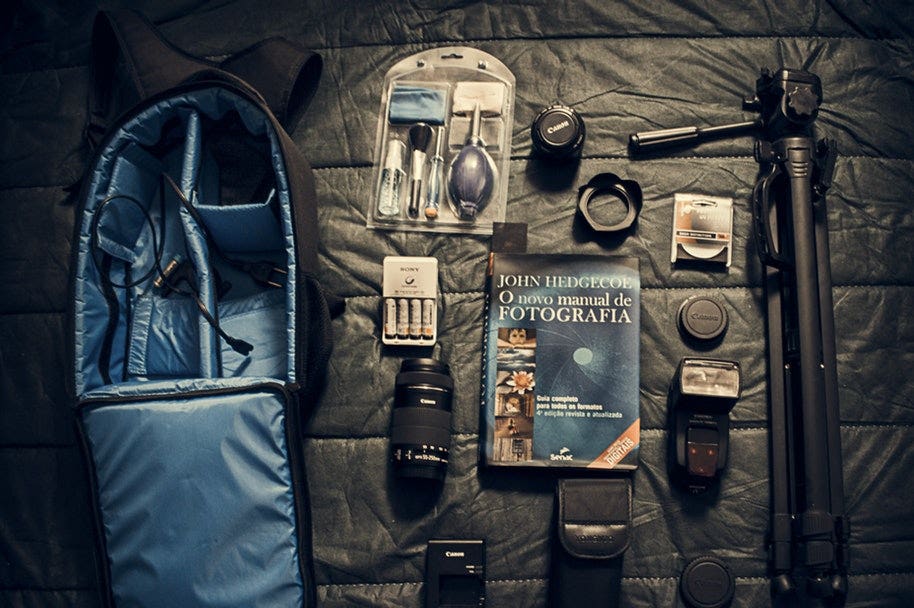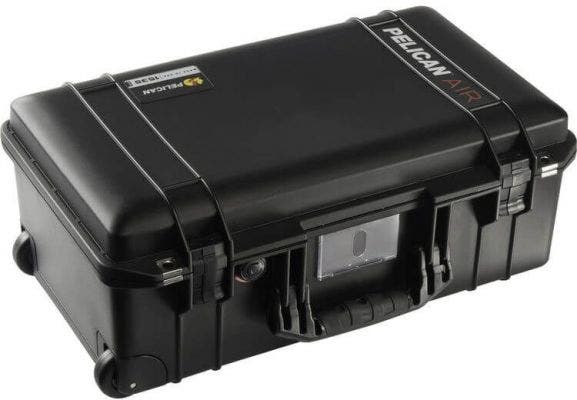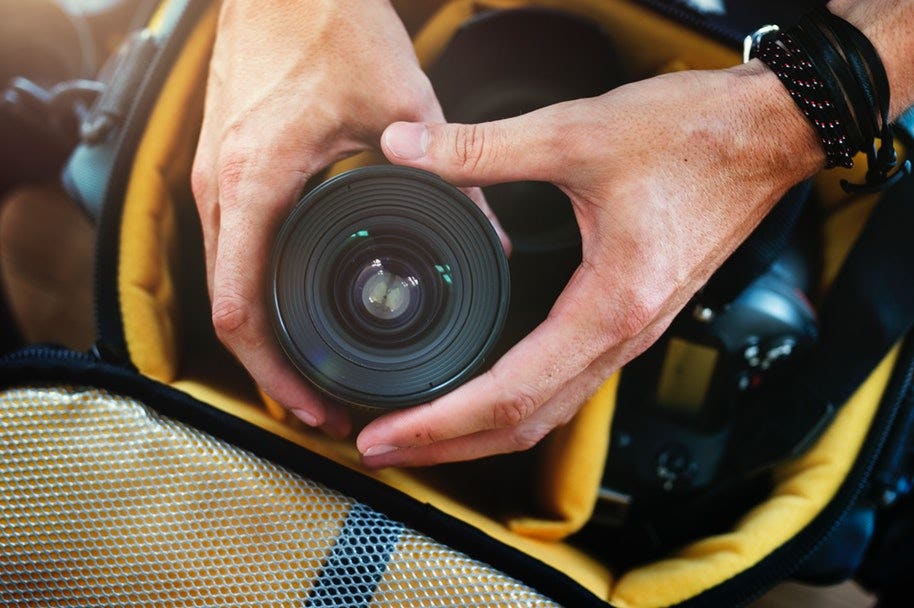
Regardless of whether you have a dedicated camera backpack or shoulder bag or whether you prefer to use your own everyday bag, a few good camera packing tips can make a huge difference to protecting your equipment in the long run.
In this post, we’ve listed some of our favourite tips and hacks to pack your camera bag.
How to properly pack your camera bag

Let’s start with some valuable packing tips if you have a dedicated camera bag. A camera bag comes with compartments divided by protective foam inserts, making it easy for you to separate and protect your gear.
Most photographers store their camera and lenses either in the middle of their bag so they're as padded as can be or at the bottom of their bag to distribute the heaviest equipment where it sits most comfortably when carried.
Smaller camera bag compartments should be reserved for small items - filters, spare batteries, remote controls, and so forth. Small zip pockets are a great place for your memory card.
Wrap your equipment in padding
If you don’t have a dedicated backpack, use padded cases, wraps, bags, or internal camera units to protect your individual pieces of equipment. Some photographers even wrap their lenses and camera bodies in socks and beanies.
Mindshift Panorama inserts are designed to go in a Mindshift Panorama backpack but they’re also a great option to throw into any everyday bag too. They have a wide-top opening but a thin width that makes them nice and compact without compromising on protection.
Photographer Rick Berk also labels each of his lens pouches with the type of lens inside using a permanent marker so he can easily access the lens he needs at any given moment.
Use Pelican cases

If you want to ensure absolute protection of your gear, your best bet will be waterproof, lockable hard cases, like the Pelican range. Pelican cases may be a little bulky for hiking but they’re perfect if you need to check in any valuable camera equipment on a flight. They’re also great for road trips.
Pelican offers a range of foam inserts designed to fit snugly in their dedicated Pelican cases so that they’re fully padded on the inside.
Detach every piece of equipment
DSLRs and mirrorless cameras are made to be taken apart. Storing your equipment with the lens still attached to the body can place stress on the mounting threads and may damage them over time.
So whenever you’re off on long-haul flights or long, bumpy bus rides, it’s better to detach the lenses from your camera body, screw the lens and body caps on tightly, and store each item in a separate compartment in your bag.
It’s even a good idea to remove your memory card and battery if possible so that you don’t end up inadvertently turning on the camera and draining your battery before you even arrive at a shoot.
Store everything separately

There is a reason camera bags come with multiple padded compartments. The more your equipment rubs and jostles against one another, the more likely they are to scratch, scuff, or be damaged.
Your lenses should never touch one another in your bag but should instead be separated with foam dividers or in separate padded cases. Whatever you choose, you need a physical buffer between every piece of important equipment.
Store everything snugly
Once you’ve separated all the most important pieces and found individual areas for them within your bag, make sure they all fit snugly so they won’t move about. Your camera and lenses should be completely cocooned in their cases.
Everything needs to be stored securely, right the way down to batteries and SD cards. It doesn’t just protect your equipment - it makes finding anything so much easier. Even a loose SD card could end up scratching your lens or camera display.
Use silica gel packs
When you get any new equipment, you’ll often find silica gel packs stored with the packaging. These little bags absorb any moisture around your camera and serve as great protection against moisture damage.
Store silica gel packs with your camera if you’re venturing into areas with humidity or high condensation.
Ready to get packing?
Don’t even know what to put in your bag? Find out some of the essential camera equipment you need on any shoot or shop online at Camera House for the perfect camera bag for your needs.
